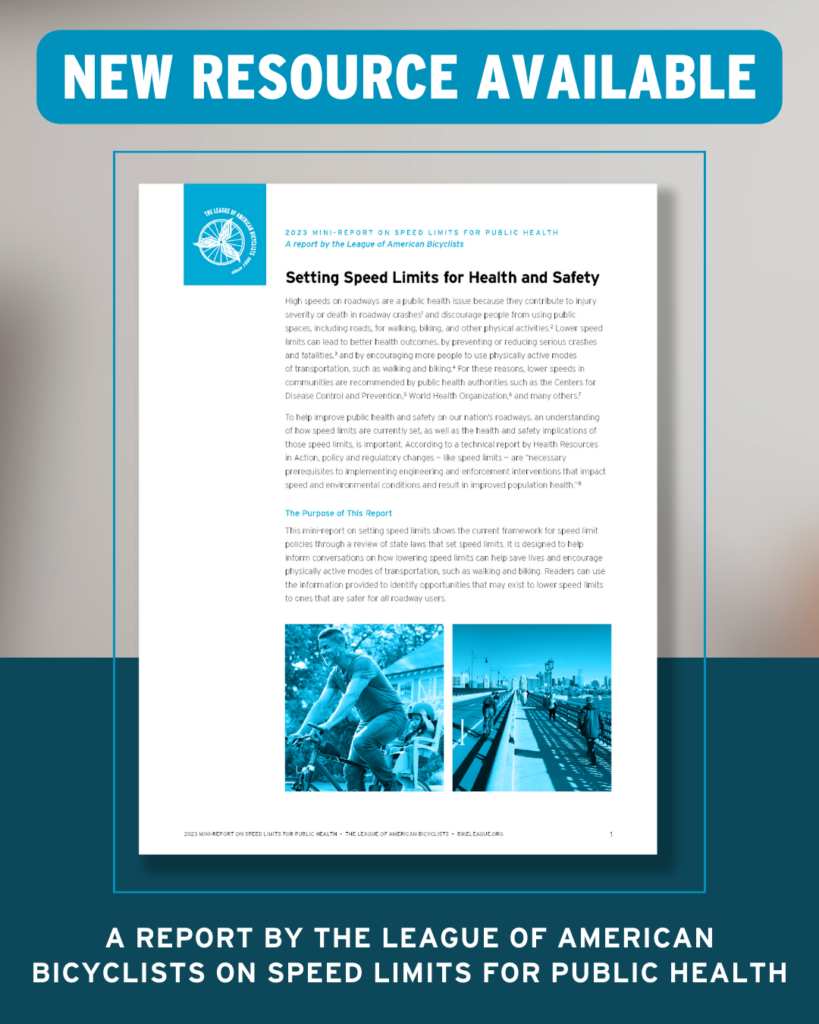DISCOVER YOUR LOCAL BICYCLING COMMUNITY
Find local advocacy groups, bike shops, instructors, clubs, classes and more!
New Resource: Setting Speed Limits for Health and Safety

It’s National Public Health Week and the League of American Bicyclists is proud to celebrate with a new resource, “Setting Speed Limits for Health and Safety.“
Public health is the science of protecting and improving the health of people and their communities, and one way a community can support public health is by providing access to routes with speeds that support the safe movement of people inside and outside of vehicles. Slower vehicle speeds not only help prevent death and serious injuries, but they can encourage physically active modes of transportation, such as walking and bicycling which has a range of health benefits.
This new resource reviews the types of laws that states use to set the lowest speed limits in their states. State laws that set speed limits based upon roadway contexts, development patterns, and types of adjacent institutions — such as schools — are common. It is also common for state laws to require traffic studies for lowering speed limits and, in some cases, for state laws to prohibit slower speeds. This resource focuses on the lower end of speed limits because slower speeds can support health and safety goals.
Twenty miles per hour (mph) speed limits are promoted for public health and safety because they help ensure that vehicle crashes are less common and more survivable when they occur. Currently, 20 mph speed limits are rarely promoted or enabled through state speed limit laws. In urban districts, it is more common for 20 mph speed limits to be explicitly prohibited than encouraged. Nineteen states currently set speed limits in urban and business districts at 30 mph or above, a speed at which a person hit while walking has a 25% chance of death. It is no accident that the most common posted speed limit on roads where a person biking or walking is killed is 45 mph, a speed at which a person hit has a more than 50% chance of death. Creating more streets with speed limits of 20 mph or less, where a person has less than a 10% chance of death if hit, is a science-based approach to traffic safety.
The League of American Bicyclists knows that Slow Roads Save Lives and we’re excited to share this resource with you. This resource is designed to help you better understand how states set their speed limits and what barriers to setting slower speed limits are. This information can be used to identify opportunities to lower speed limits in your state to support health and safety goals. We hope that by using this resource you are better equipped to help your state improve health and safety.
The League of American Bicyclists developed this report with funding from the Centers
for Disease Control and Prevention’s Division of Nutrition, Physical Activity, and Obesity.
This report is designed to help highlight the importance of lowering speeds to help prevent
injuries and fatalities and support activity-friendly routes to everyday destinations. These
efforts are part of the Active People, Healthy NationSM Initiative that is working to help 27
million Americans become more physically active by 2027.